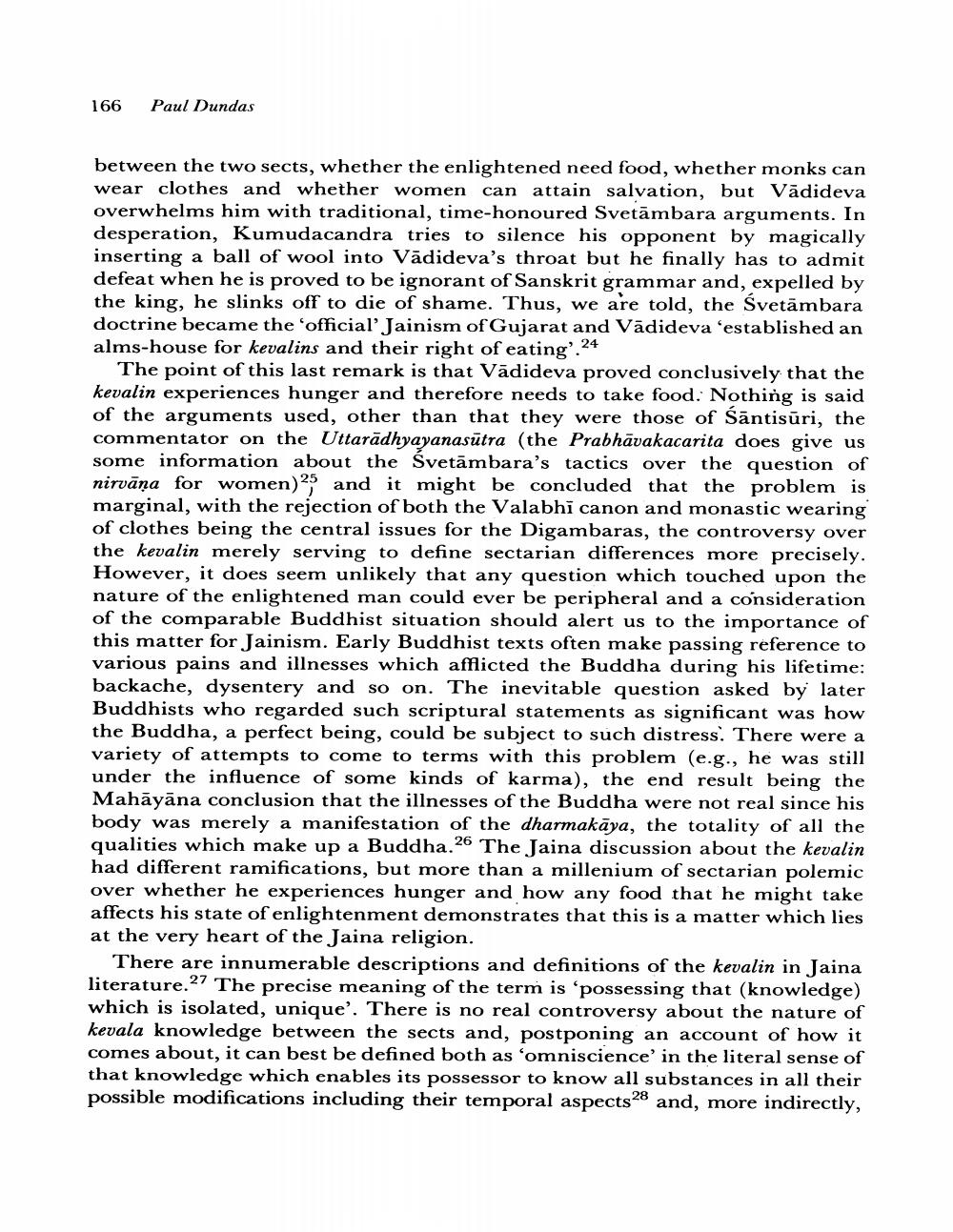Book Title: Food And Freedom Author(s): Paul Dundas Publisher: Paul Dundas View full book textPage 6
________________ 166 Paul Dundas between the two sects, whether the enlightened need food, whether monks can wear clothes and whether women can attain salvation, but Vādideva overwhelms him with traditional, time-honoured Svetāmbara arguments. In desperation, Kumudacandra tries to silence his opponent by magically inserting a ball of wool into Vādideva's throat but he finally has to admit defeat when he is proved to be ignorant of Sanskrit grammar and, expelled by the king, he slinks off to die of shame. Thus, we are told, the Svetāmbara doctrine became the 'official Jainism of Gujarat and Vādideva 'established an alms-house for kevalins and their right of eating'. 24 The point of this last remark is that Vadideva proved conclusively that the kevalin experiences hunger and therefore needs to take food. Nothing is said of the arguments used, other than that they were those of Santisūri, the commentator on the Uttarādhyayanasūtra (the Prabhāvakacarita does give us some information about the Svetāmbara's tactics over the question of nirvāņa for women) 25 and it might be concluded that the problem is marginal, with the rejection of both the Valabhi canon and monastic wearing of clothes being the central issues for the Digambaras, the controversy over the kevalin merely serving to define sectarian differences more precisely. However, it does seem unlikely that any question which touched upon the nature of the enlightened man could ever be peripheral and a consideration of the comparable Buddhist situation should alert us to the importance of this matter for Jainism. Early Buddhist texts often make passing reference to various pains and illnesses which afflicted the Buddha during his lifetime: backache, dysentery and so on. The inevitable question asked by later Buddhists who regarded such scriptural statements as significant was how the Buddha, a perfect being, could be subject to such distress. There were a variety of attempts to come to terms with this problem (e.g., he was still under the influence of some kinds of karma), the end result being the Mahāyāna conclusion that the illnesses of the Buddha were not real since his body was merely a manifestation of the dharmakāya, the totality of all the qualities which make up a Buddha. 26 The Jaina discussion about the kevalin had different ramifications, but more than a millenium of sectarian polemic over whether he experiences hunger and how any food that he might take affects his state of enlightenment demonstrates that this is a matter which lies at the very heart of the Jaina religion. There are innumerable descriptions and definitions of the kevalin in Jaina literature. 27 The precise meaning of the term is 'possessing that (knowledge) which is isolated, unique'. There is no real controversy about the nature of kevala knowledge between the sects and, postponing an account of how it comes about, it can best be defined both as 'omniscience' in the literal sense of that knowledge which enables its possessor to know all substances in all their possible modifications including their temporal aspects 28 and, more indirectly,Page Navigation
1 ... 4 5 6 7 8 9 10 11 12 13 14 15 16 17 18 19 20 21 22 23 24 25 26 27 28 29 30 31 32 33 34 35 36 37
